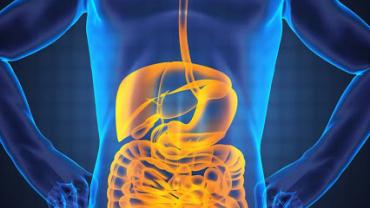According to a new study published in Nature, a research team from Yale has identified the mechanism in which gut dysbiosis leads to obesity. Scientists have already understood that the gut microbiome is associated with metabolic markers and type II diabetes. However, while we may know that obesity is linked to changes in the gut bacteria, the associated mechanism has been unclear.
Previous research had shown that the short chain fatty acid, acetate, stimulates the secretion of insulin in mice. In this new study, when researchers compared acetate to other SCFAs, they discovered higher acetate levels in those that consumed a high fat diet. They also saw that acetate stimulated insulin secretion by beta cells in the pancreas, but this mechanism was not clear.
The researchers then observed that when acetate was then injected directly into the brain, it caused an increased release of insulin stimulating the parasympathetic nervous system. As a result, the increased acetate stimulated the beta cells of the pancreas to secrete more insulin in response to glucose. This also stimulated the secretion of gastrin and ghrelin, causing an increase in food intake.
To establish a causal relationship between the gut microbiota and increased insulin, the research team transferred fecal matter from one group of mice to another. As a result, they observed similar changes in the gut bacteria (microbiota) with acetate levels and insulin.
In summary, this research demonstrates an association of alterations in the gut microbiota as a result of dietary changes leading to an increased acetate production. Furthermore, the increased acetate leads to increased food intake causing metabolic syndrome, insulin resistance, and obesity.
The research team suggests this mechanism may have played a role in evolution by stimulating animals to fatten up in times of food scarcity.
Nourishing the Microbiome
I attended a probiotic workshop at Yale last March and one of the presentations was given by Max Nueuwdrop, MD, PHD, an internist and endocrinologist from Amsterdam who went into detail on the microbiota and metabolism. He showed how butyrate, a SCFA, improved insulin resistance and brown fat activation. In general, low short chain fatty acids (SCFAs) are associated with low diversity and abundance of the commensal bacteria. We typically want to see high levels of butyrate and not acetate. When patients introduce probotics and increase their dietary fiber intake by consuming fruits and vegetables, the beneficial bacteria, butyrate, and SCFAs increase.
Probiotics help encourage microbial diversity, especially if the probiotic supplement is of mixed species. In ecological terms, it is more stable to have diverse populations in any ecosystem. The same is true for the gastrointestinal microbiome.
This also brings up the importance of stool testing in patients with metabolic syndrome and diabetes, looking at fasting glucose, insulin, A1c, and lipid profiles.
Other research has indicated that obesity has a microbial component that alters the caloric extraction from ingested food. For example, if more Bacteroidetes are present, the individual tends to be leaner. High ratios of Firmicutes to Bacteroidetes have been known to increase the caloric extraction from food, and these individuals tend to be more obese. This also ties together the importance of dietary fiber and weight loss.

